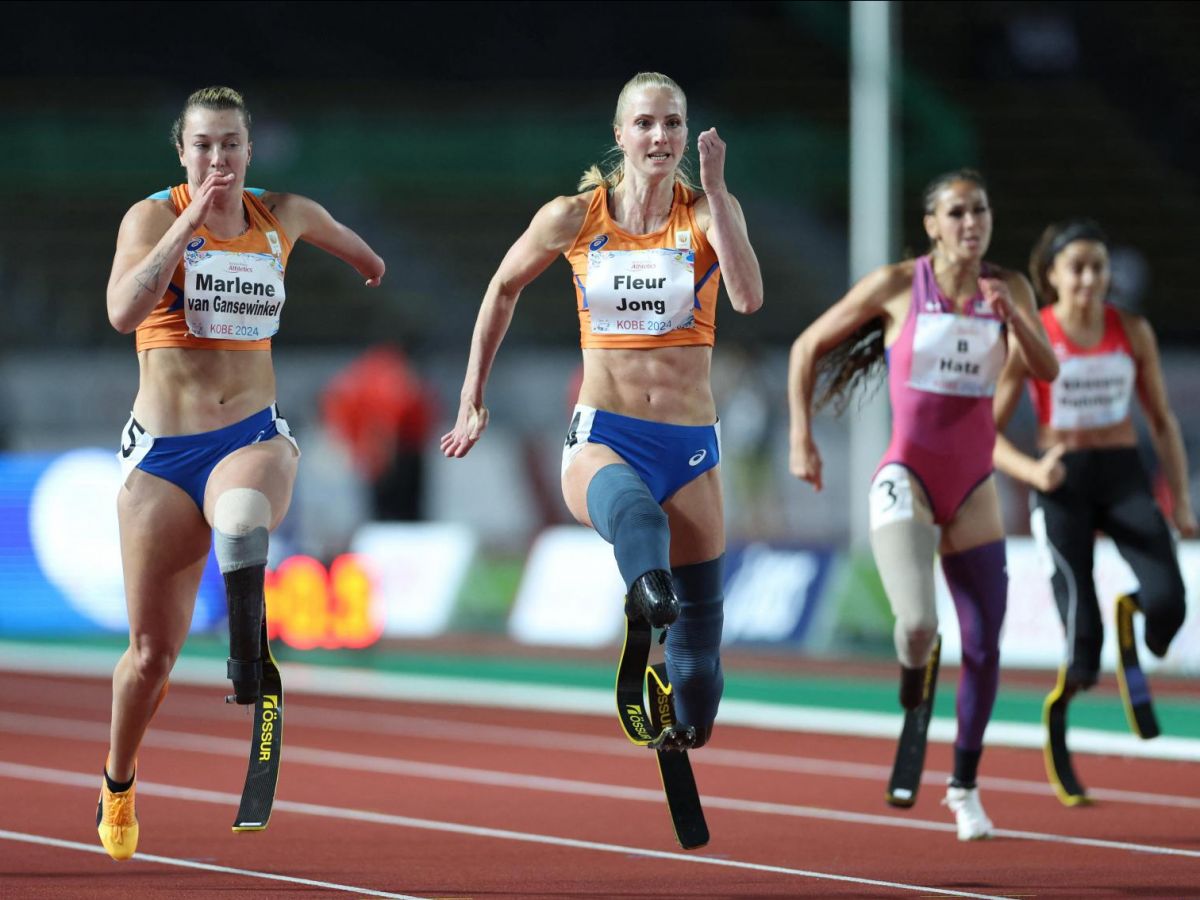It's D-Day! A few hours before the opening ceremony of the Paris 2024 Paralympic Games, here are some keys to understanding the classification of the upcoming competitions.
The Paris Paralympic Games have 549 medal events for 23 disciplines, compared to 329 for the forty or so disciplines of past Olympic Games. This gap is explained by the diversity of event categories within each Paralympic sport, depending on the athletes' disability. For example, in para athletics, there is a 100-meter event reserved for blind people, separate from that for people with an intellectual disability. And some categories, such as wheelchair racing, are also divided into several events, depending on the degree of the athletes' disability.
Read alsoVIDEO. The speed of wheelchair racing seen by physics
A test = a letter + a number
Before competing, athletes are therefore classified. This classification is carried out by professionals from the medical and technical world whose mission is to evaluate the impact of the disability on the sporting gesture and the performance of the athlete", summarizes the site of Paris 2024 Games. So, each event pits athletes with similar degrees of disability against each other. So how does classification work?
When you watch the events, you will notice that each of them is associated with a code: a letter next to a number. The letter refers to the sport, in English. Swimming is named with an S for "swimming". Para rowing is associated with two letters: PR for "para rowing".
This letter is associated with a number. The larger it is, the lighter the disability. Let's take judo for example. Athletes are divided into two categories, visually impaired judokas, J2, and blind judokas, J1.
Sometimes the letter is not associated with a single number, but two. The first indicates the type of disability: visual, intellectual, motor, etc. And the second, the degree of the disability. This is the case for para athletics for example.
Read alsoOlympic Games: science at the service of athletes
Para athletics: 7 subcategories
There are no fewer than 164 para athletics events, and therefore just as many gold medals to be won by the athletes! Para athletics are dizzying numbers. While the Olympic Games have two 100-metre finals (men-women), the Rio 2016 Paralympic Games had 30 (16 men, 14 women) due to the number of disability categories," recalls the Paralympic Games website.
First, para athletics is divided into two categories: running and jumping, with a T for "track" and throwing with an F for "field". Then, the associated number gives an indication of the type of disability of the athletes and their degree:
- 12 – 13: visual handicap
- Mental handicap 20
- 31 to 38: cerebral motor disability
- 40 to 47: people of short stature, amputation of upper limb or similar, similar amputation of lower limb.
- T 51 to 54: wheelchair racing
- F 51 to 58: wheelchair throwing events
- 61 to 64: amputation of lower limbs
Para dressage: from therapy to competition
Dressage is the only para-equestrian event. Originally, it was a therapy and a leisure activity with multiple benefits: calming, anchoring in the present, positive emotions of well-being, etc. Although the first competitions were born in the 1970s, para-dressage was not integrated into the Paralympic Games until 1996, at the Atlanta Games. Men and women compete together, divided into four different disability grades.
Each of the 23 disciplines has its own classification system. Thanks to the determination of the athletes, more and more sports have opened up to Paralympic events. Technological progress has also revolutionized the practice of these disciplines: maneuverability of wheelchairs, aerodynamics of racing blades... A striking technological leap when you think of the Stoke Mandeville Games, in 1948, precursors of the current Paralympic Games.
